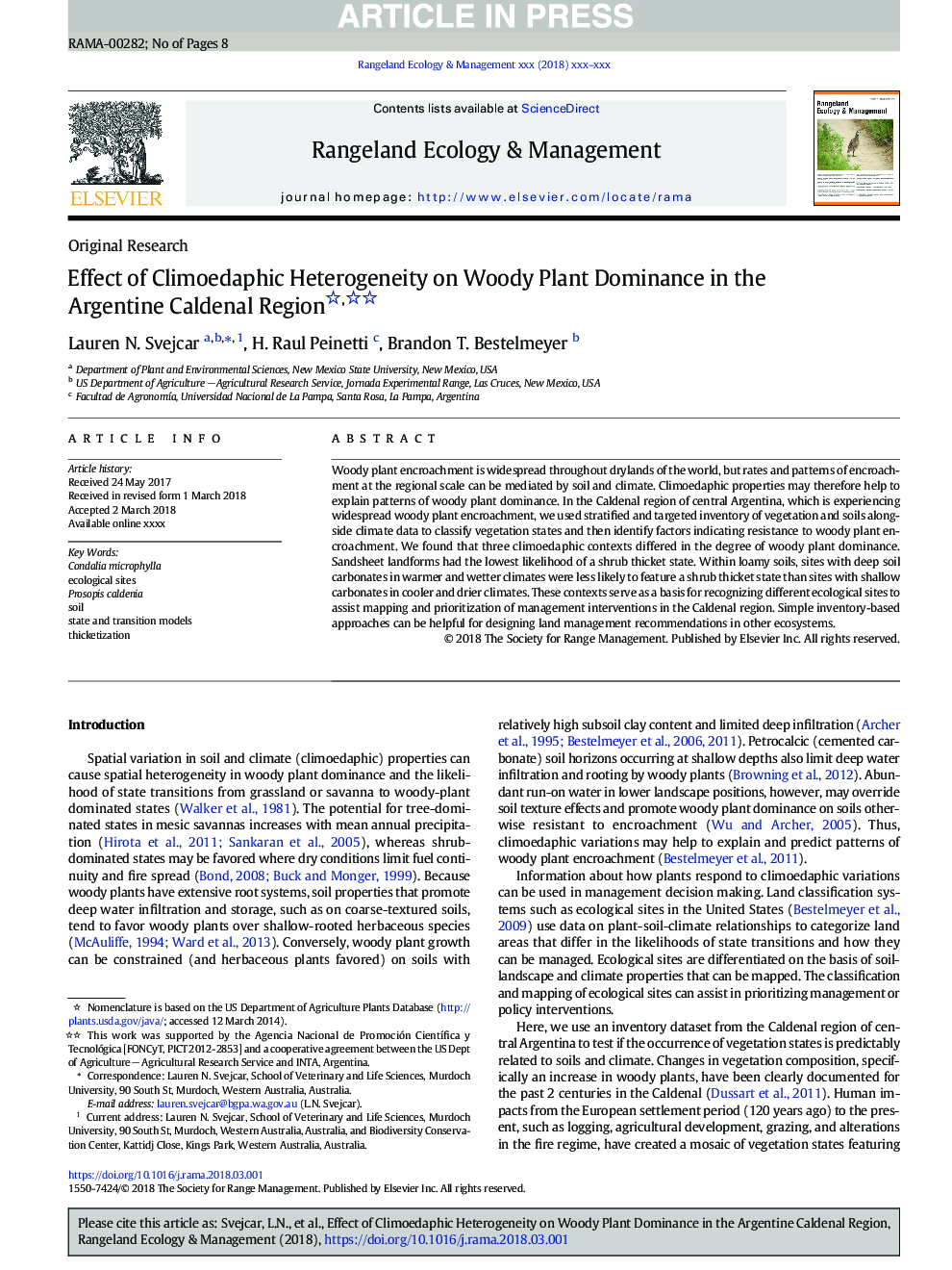| Article ID | Journal | Published Year | Pages | File Type |
|---|---|---|---|---|
| 8849567 | Rangeland Ecology & Management | 2018 | 8 Pages |
Abstract
Woody plant encroachment is widespread throughout drylands of the world, but rates and patterns of encroachment at the regional scale can be mediated by soil and climate. Climoedaphic properties may therefore help to explain patterns of woody plant dominance. In the Caldenal region of central Argentina, which is experiencing widespread woody plant encroachment, we used stratified and targeted inventory of vegetation and soils alongside climate data to classify vegetation states and then identify factors indicating resistance to woody plant encroachment. We found that three climoedaphic contexts differed in the degree of woody plant dominance. Sandsheet landforms had the lowest likelihood of a shrub thicket state. Within loamy soils, sites with deep soil carbonates in warmer and wetter climates were less likely to feature a shrub thicket state than sites with shallow carbonates in cooler and drier climates. These contexts serve as a basis for recognizing different ecological sites to assist mapping and prioritization of management interventions in the Caldenal region. Simple inventory-based approaches can be helpful for designing land management recommendations in other ecosystems.
Related Topics
Life Sciences
Agricultural and Biological Sciences
Agricultural and Biological Sciences (General)
Authors
Lauren N. Svejcar, H. Raul Peinetti, Brandon T. Bestelmeyer,
